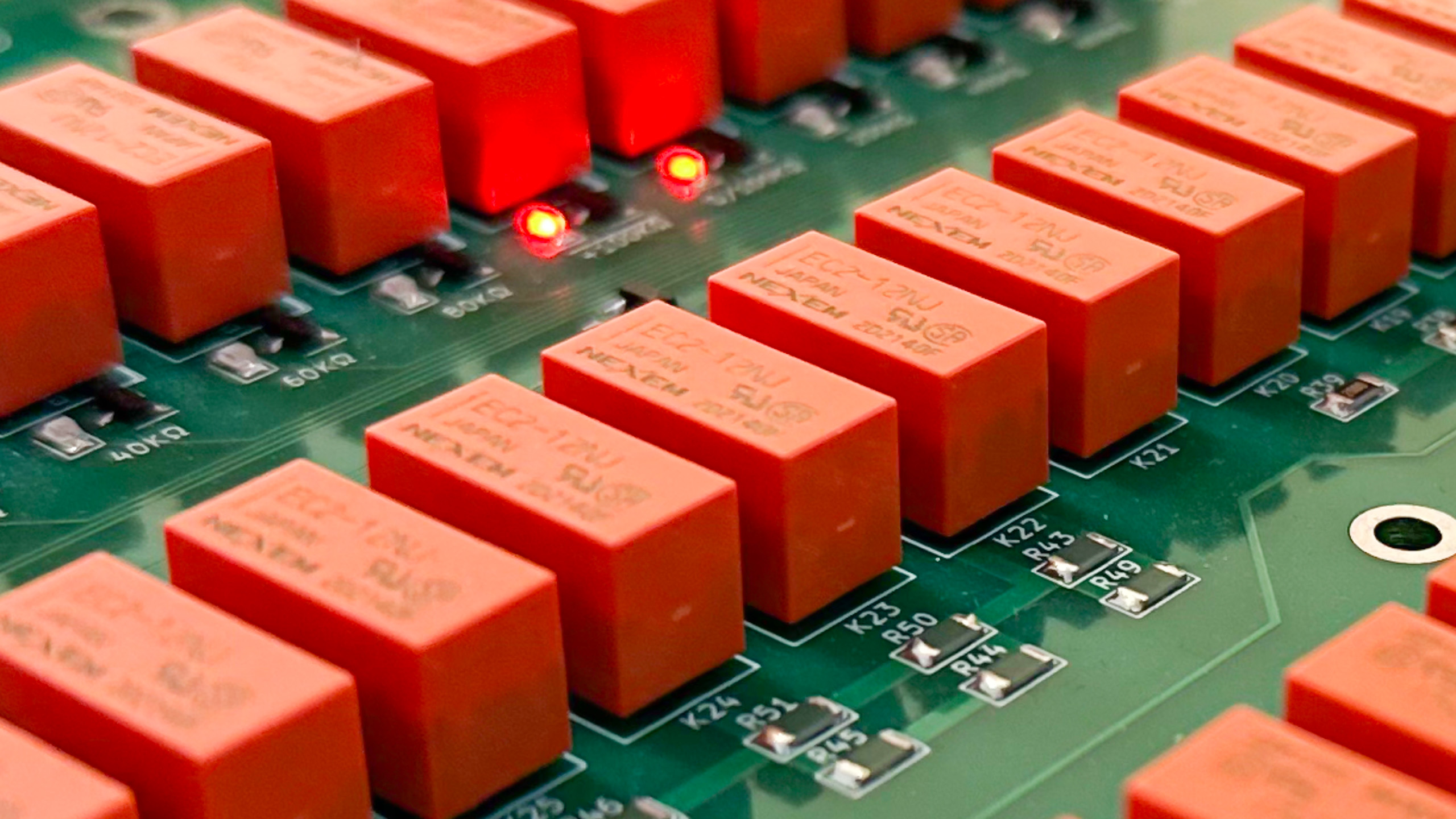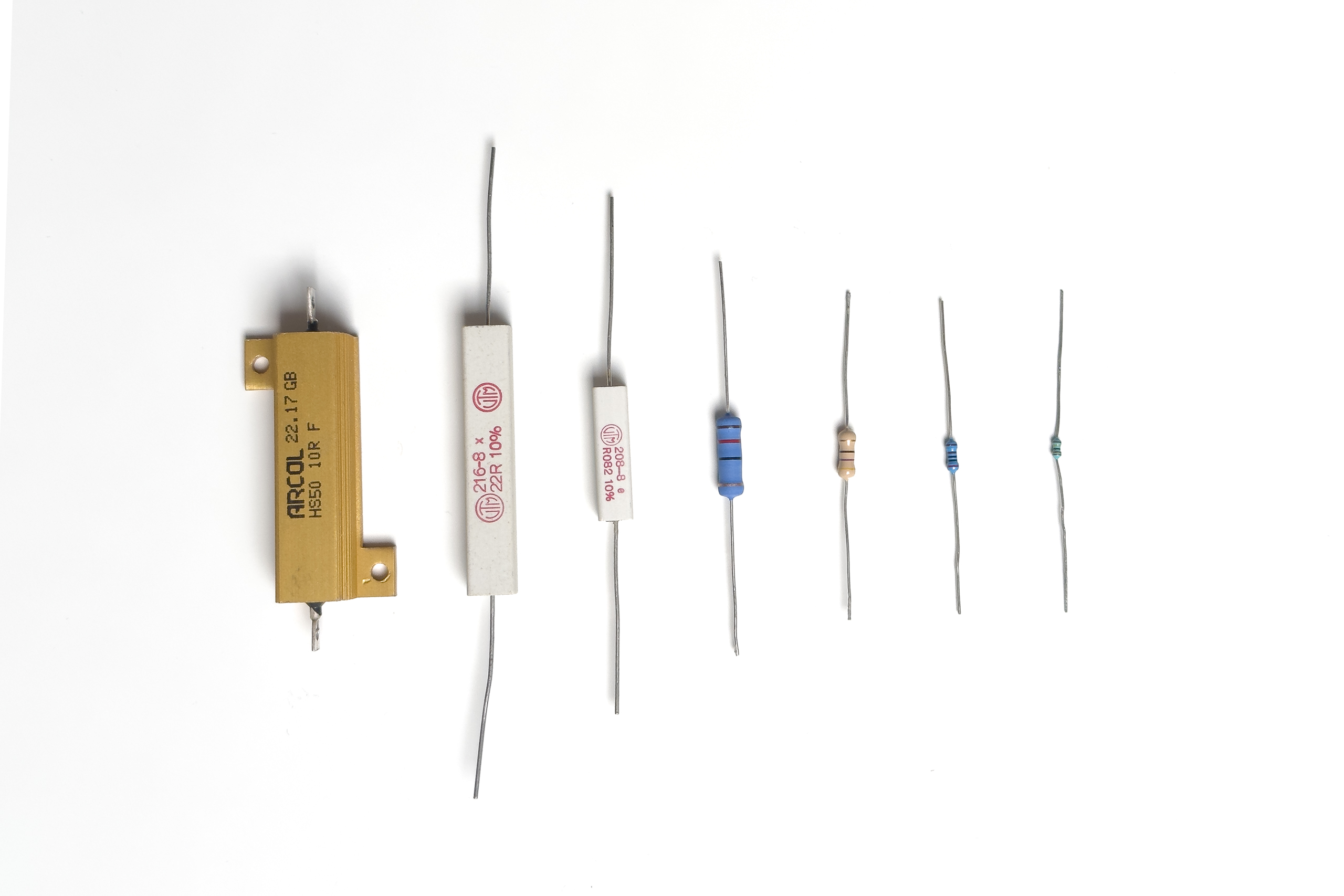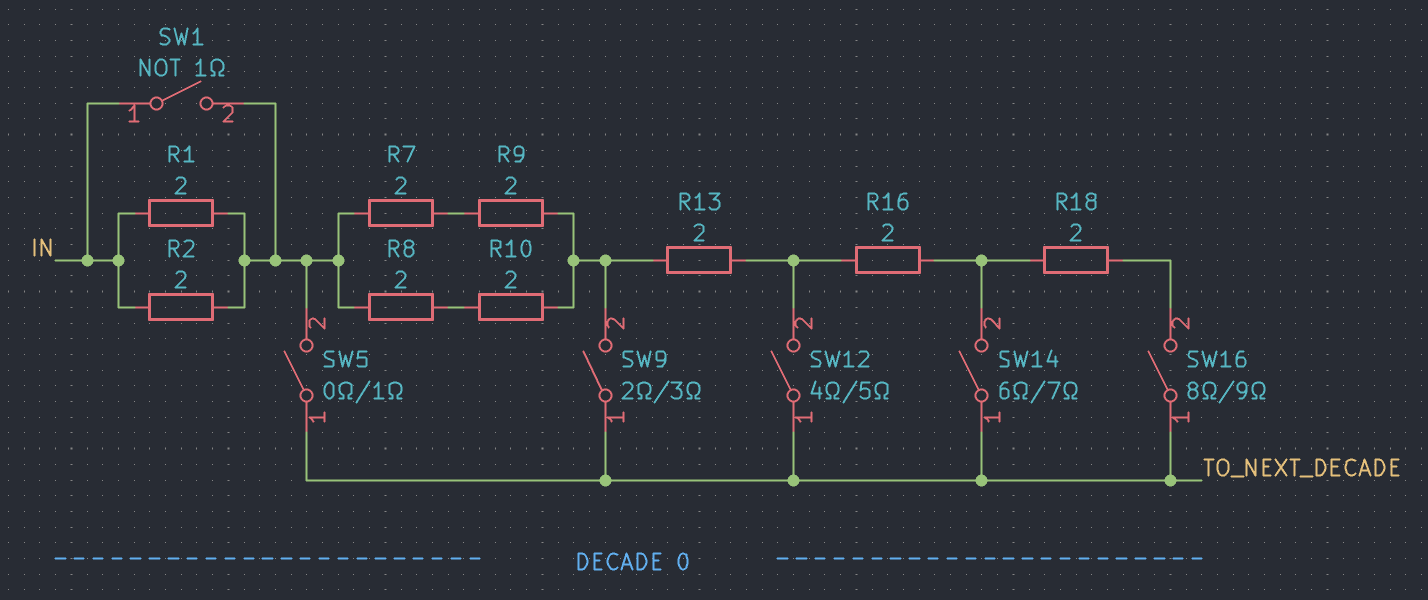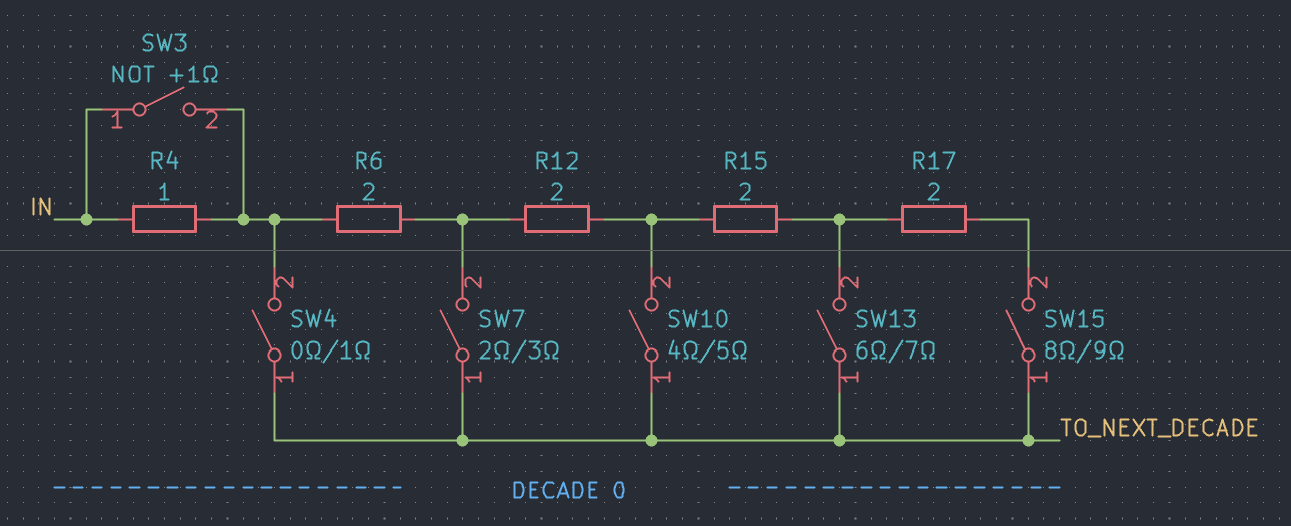Category: Programmable Decade Resistor
-

Programmable Decade Resistor: System Design
The block diagram provides an overview of the different circuit groups of each functional block, their internal connections and external interfaces. The Programmable Decade Resistor consists of three main functional blocks: The power supply board uses an off-the-shelve AC/DC converter to provide a +15V rail. The +15V rail powers the relays on the mainboard as…
-

Programmable Decade Resistor: Switching (3)
Now that we have a calibrated programmable resistance decade, we can try to make the programmable decade resistor more accuracte – for higher resistance values. Actually, the idea behind that is trivial. I’d like to start with an example in which we set a resistance value of \(R_{set} = 100.000\text{ k}\Omega\). (Let’s not worry about…
-

Programmable Decade Resistor: Switching (2)
In the last post we had a look at the short circuit performance of a decade. This time I want to address the question whether we can make the resistor decade more accurate, despite the fact that the design doesn’t feature any mechanism (e. g. potentiometer) to adjust resistance values. The short answer: Yes, partially.…
-

Programmable Decade Resistor: Switching (1)
In the previous posts we discussed the topology selection as well as the power handling capabilities of the decade resistor. Now it’s time to have a look at different aspects of switching. Today it’s all about the effect of the contact resistance of the relays, which impacts the performance of the decade resistor, not only,…
-

Programmable Decade Resistor: Power Rating (2)
In the last post we discussed how to calculate the power rating of the programmable decade resistor. We assumed that the decade resistor is made of resistors with the same power rating – in reality this might not be the case. Also, it might be a good thing to derate the resistors a bit. So…
-

Programmable Decade Resistor: Power Rating (1)
In the last post we worked on some implementation details to consolidate the bill of material while improving the power rating of the decade resistor. However, we didn’t actually analyze the design regarding power dissipation. So let’s get some definitions out of the way (goto Conclusion for tldr): \(n\) Decade \(n\) providing resistance values \(0\Omega\),…
-

Programmable Decade Resistor: Topology (2)
In the last post we selected a resistor network and switch topology that suits the needs of this programmable resistor. Now we will apply simple optimizations that allow an effective and cost-efficient implementation. Optimizing the bill of material In order to reduce the number of different components the single \(1 \Omega\) is replaced by two parallel \(2…
-

Programmable Decade Resistor: Topology (1)
In this post I want to share how I selected a suitable topology for the resistor network that will be the core of the programmable decade resistor. Although I did some online “research”, the following criteria determined my choices: There are many more aspects that could have been considered in greater detail (like frequency response).…
-

Progammable Decade Resistor: Intro
In 2021/2022 I designed a DC electronic load that would be more capable, but also much more complex than the usual DIY solutions. However, after building a working breadboard prototype of the analog circuitry with 12 ICs including multiple precision and dual opamps, I thought that it might be better to start with a smaller…